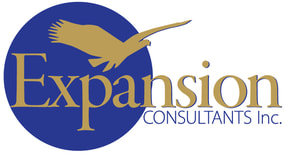JAMA Ophthalmology 2014;132(3):258-64
http://www.ncbi.nlm.nih.gov/pubmed/24435660
Reviewed by Dr. Marc Taub; Memphis, Tennessee
Eye care providers are constantly bombarded with questions from parents related to the progression of their children’s myopia. They demand to know how high the prescription will reach, will the children need new glasses every year, and what can be done to stop the myopia from getting worse. They do not want their children wearing Coke-bottle glasses! There are numerous theories concerning the cause of myopia progression and just as many treatments. Eye care providers have studied hard contact lenses, orthokeratology, under-minusing with glasses, bifocal glasses with high add powers, and multifocal contact lenses. Some studies show positive gains with each of these treatments, while others show the opposite. In this study, the authors examined the progression of myopia comparing bifocal glasses to bifocal glasses with prism.
Myopia progression over 3 years was an average of -2.06 +/-0.13 D for the single-vision lens group, -1.25 +/-0.10 D for the bifocal group, and -1.01 +/-0.13 D for the prismatic bifocal group. The treatment effect of bifocals (0.81 D) and prismatic bifocals (1.05 D), compared to the single-vision lens group was significant (P < .001). There was no significant difference between the two bifocal designs (P=0.15). Axial length increased an average of 0.82 +/-0.05 mm for the single-vision lens group, 0.57 +/-0.07 mm for the bifocal group, and 0.54 +/-0.06 mm for the prismatic bifocal group. Both bifocal groups had less axial elongation (0.25 mm and 0.28 mm, respectively) than the single-vision lens group (P < .001).
For children with high lags of accommodation (≥ 1.01 D), the treatment effect of both bifocals and prismatic bifocals was similar (1.1 D) (P < .001). For children with low lags (<1.01 D), the treatment effect of prismatic bifocals (0.99 D) was greater than of bifocals (0.50 D) (P = .03). The treatment effect of both bifocals and prismatic bifocals was independent of the near phoria status.
Multiple linear regression analysis showed that age (higher progression with lower age, P<.001), baseline myopia progression (higher progression with higher baseline myopia progression, P=0.03), and parental myopia (higher progression the greater the number of myopic parents, P=0.04) were associated with the magnitude of treatment effect.
Both bifocals and prismatic bifocals were found to significantly inhibit myopia progression in children compared to single-vision lenses within the three-year treatment period. Bifocal spectacles slowed myopia progression in children with an annual progression rate of at least 0.50 D after 3 years. The greatest impact was found in the first year of treatment but held steady throughout the treatment period. This study adds fuel to the fire for behavioral optometrists who routinely prescribe bifocal spectacles, either with or without prism, with the sole purpose of retarding myopia progression. While mainstream optometry puts down this practice, this randomized clinical trial directly refutes their disdain.

 RSS Feed
RSS Feed

